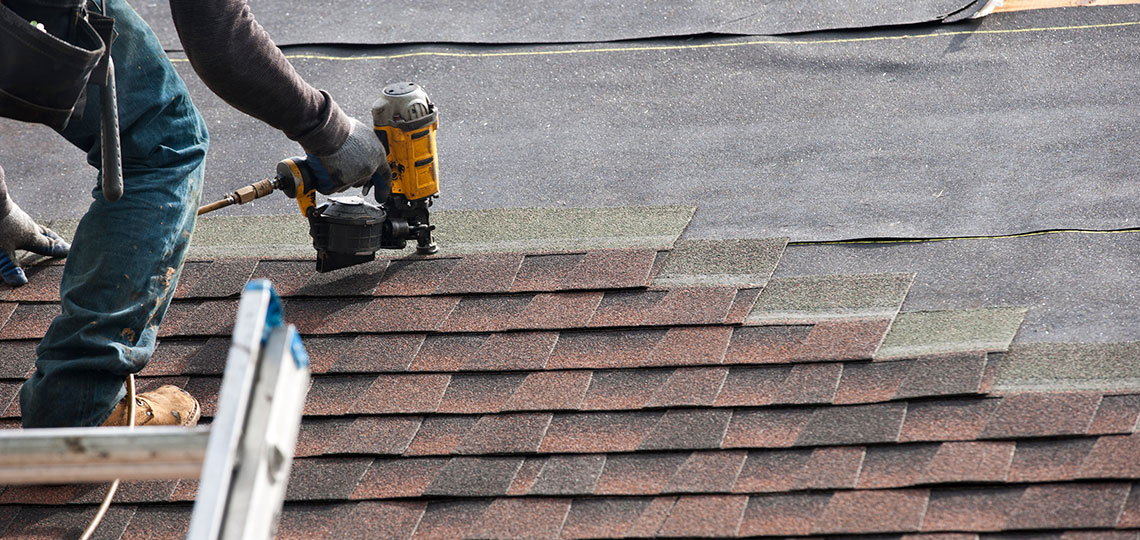Step-by-Step Guide to Discovering the Right Roofing Companies in Gainesville
Wiki Article
Ideal Practices for Ensuring Correct Roof Covering Ventilation
A well balanced consumption and exhaust vent proportion, generally 1:300, plays a pivotal duty, with intake vents preferably positioned at the lower edge of the roof covering for amazing air access and exhaust vents at the height for warm air exit. Maintaining insulation away from vents is essential to stop air flow restriction.Understand Air Flow Essentials
Appropriately understanding ventilation basics is important for guaranteeing the longevity and effectiveness of roof. Effective air flow minimizes wetness build-up and temperature extremes in the attic, both of which can result in substantial structural damage in time. A well-ventilated roof helps in protecting against common issues such as mold and mildew development, wood rot, and ice dams, which can compromise the honesty of the roof materials and the underlying structures.The main objective of air flow is to help with the activity of air, permitting a consistent exchange in between the outside and interior settings. This equilibrium is attained with a combination of consumption and exhaust vents that function together to preserve ideal airflow. Consumption vents, typically located along the eaves or soffits, allow fresh air to get in the attic room area, while exhaust vents, frequently positioned at or near the roof ridge, make it possible for warm, humid air to get away.
Secret aspects influencing the performance of roofing system air flow include proper positioning, adequate sizing, and making certain that both consumption and exhaust vents are unhampered. Normal inspection and upkeep are crucial to determine potential obstructions, damage, or inefficiencies in the air flow system, therefore guarding the roofing's performance and sturdiness.
Kinds of Roof Covering Vents
Roof vents play a vital function in preserving reliable attic air flow and, by extension, the total health of the roof covering system. Different types of roof vents are readily available, each with special benefits tailored to details roof covering demands.
Soffit vents are set up under the eaves and work in tandem with roof covering vents to make sure a balanced intake and exhaust system. By allowing cooler air to go into from below, soffit vents facilitate the expulsion of warm air with upper vents. Gable vents, located on the exterior wall surfaces of the attic room, deal one more effective service, specifically in homes with gable roof coverings.
Assess Your Present Ventilation

Following, consider the age and problem of your roof covering materials and ventilation components. Older systems might not abide by current structure codes or may have deteriorated in time, decreasing their efficiency. Conduct a thorough assessment to identify any kind of indications of wear and tear, such as corrosion, damages, or view spaces that can endanger the system's efficiency.
Furthermore, measure the attic room temperature and moisture degrees. Heats and humidity can indicate poor ventilation - roofing companies gainesville florida. Utilize a hygrometer and thermometer to get accurate analyses, comparing them with outside conditions. Consistent inconsistencies recommend potential problems that require resolving.
Installation Best Practices
Efficient installation of roof covering ventilation systems is critical for making certain ideal efficiency and long life. Correct installment begins with understanding the specific ventilation requirements of the structure and the roof it covers. This includes calculating the proper proportion of consumption to wear down vents, typically adhering to the 1:300 regulation, which states one square foot of ventilation for every single 300 square feet of attic room flooring space.
The placement of vents is similarly vital. Intake vents must be installed at the roofing's reduced edge, often in the soffits, to permit amazing air to get in. Exhaust vents, on the various other hand, need to be installed near Continue or at the roof's height to facilitate the departure of cozy, moist air. This creates a natural air movement that aids maintain temperature and wetness balance within the attic area.
Seal all vent connections meticulously to stop air leaks and possible water seepage. Use top quality materials and adhere to maker guidelines to ensure sturdiness and efficiency. Furthermore, incorporating ridge vents with baffles can substantially boost air flow effectiveness by preventing wind-driven rain and snow from going into the attic room.
Inevitably, exact setup of roofing air flow systems minimizes prospective concerns such as mold development, ice dams, and structural damages, guaranteeing the roof covering's honesty and the building's general health and wellness.
Regular Maintenance Tips
Consistency in upkeep techniques is fundamental to guaranteeing the long-lasting efficiency of roof ventilation systems. Routine evaluations are essential, preferably performed biannually-- in the springtime and loss. During these examinations, make certain that vents are devoid of debris, nests, and other obstructions that could impede air movement. Inspect for any indicators of moisture build-up or mold and mildew, as these can suggest inappropriate air flow or leakages (gainesville fl roofing companies).
Utilize a soft brush or a vacuum to eliminate dirt and particles from consumption and exhaust vents. Be mindful not to harm the vent displays or louvers during the process.
Proper insulation is similarly important. Guarantee that attic insulation does not block the vents, as this can badly limit air flow. Reposition or replace it to keep an efficient obstacle. if any type of insulation has actually moved or worked out.
Lastly, replace any kind of harmed or missing out on parts without delay. Damaged vents, split roof shingles, or scrubby flashing can all contribute to inadequate air flow and should be addressed without hold-up. Regular upkeep makes pop over to these guys certain that the roof covering ventilation system operates optimally, thereby prolonging the lifespan of the roofing itself.
Final Thought
Ensuring correct roof ventilation is critical for preserving the effectiveness and sturdiness of a roof system. Adherence to the 1:300 consumption and exhaust air vent ratio, coupled with the strategic positioning of vents, is crucial.A well balanced consumption and exhaust vent proportion, commonly 1:300, plays an essential function, with consumption vents preferably positioned at the reduced edge of the roofing for amazing air entry and exhaust vents at the top for cozy air exit. Intake vents, commonly situated along the soffits or eaves, allow fresh air to go into the attic room area, while exhaust vents, commonly located at or near the roofing ridge, enable warm, moist air to escape.
Soffit vents are set up under the eaves and work in tandem with roofing system vents to make certain a well balanced intake and exhaust system. By permitting cooler air to enter from below, soffit vents facilitate the expulsion of hot air with upper vents. Adherence to the 1:300 consumption and exhaust vent ratio, paired with the tactical placement of vents, is important.
Report this wiki page